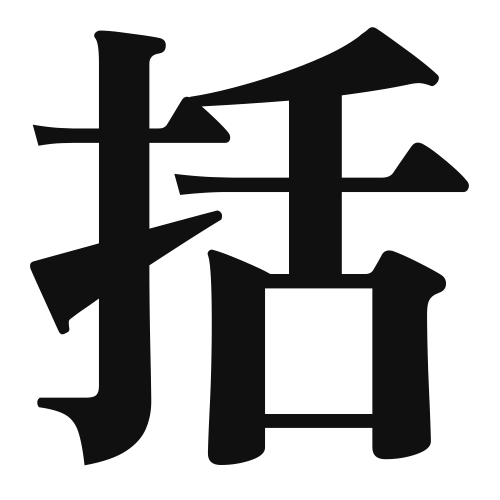1. Overview of Meaning
The kanji “括” (katsu) generally means “to bind,” “to tie together,” or “to summarize.” It conveys the idea of bringing things together or organizing them in a cohesive manner.
2. Formation and Radicals
Formation of the Kanji: The kanji “括” is a compound character (会意文字) that combines elements to convey its meaning. It consists of the radical “手” (hand) on the left, indicating action, and “括” on the right, which relates to binding or tying.
Radical: The radical of “括” is “手” (shǒu), which is associated with actions performed by the hand.
3. Examples of Usage
Common Words and Phrases: Some frequently used words that include “括” are:
- 括弧 (kakko) – parentheses
- 要括 (yōkatsu) – summary
Example Sentences in Daily Conversation:
- この文を要括してください。 (Kono bun o yōkatsu shite kudasai.) – Please summarize this sentence.
- 括弧を使って、引用を示します。 (Kakko o tsukatte, in’yō o shimeshimasu.) – I will use parentheses to indicate the quotation.
4. Synonyms and Antonyms
Similar Kanji: A similar kanji is “束” (soku), which also means “to bind” but often refers to binding things together in a more physical sense, like a bundle of flowers.
Antonyms: An antonym for “括” could be “解” (kai), which means “to untie” or “to解放” (kaihō) meaning “to release,” indicating the opposite action of binding or tying together.
5. Cultural and Historical Background
Relation to Japanese Culture: The concept of binding or summarizing is significant in Japanese culture, especially in literature and communication, where clarity and conciseness are valued.
Proverbs and Idioms: One relevant idiom is “一括して” (ikkatsu shite), meaning “in one go” or “all at once,” which reflects the idea of bringing things together efficiently.
